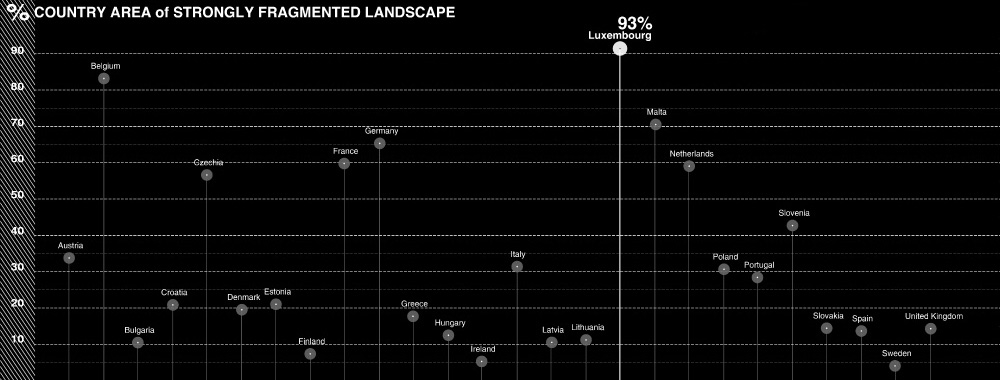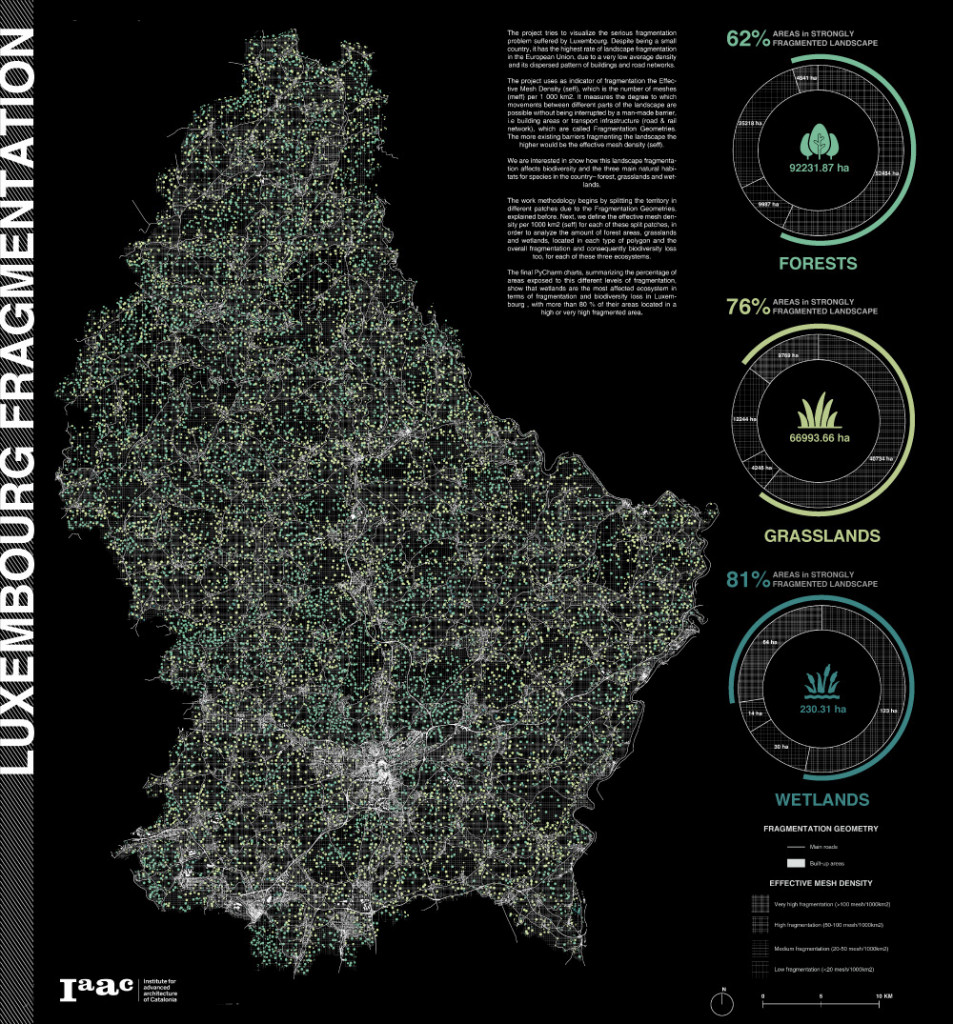Luxembourg fragmentation & biodiversity loss
The project tries to visualize the serious fragmentation problem suffered by Luxembourg. Despite being a small country, Luxembourg has the highest rate of landscape fragmentation in the European Union, due to a very low average density and a dispersed pattern of buildings and road networks.

The project uses as an indicator of fragmentation the Effective Mesh Density (seff), which is the number of meshes (meff) per 1 000 km2. It measures the degree to which movements between different parts of the landscape are possible without being interrupted by a man-made barrier, such as buildings or transport infrastructure (road & rail network), which are considered as Fragmentation Geometries. The more existing barriers fragmenting the landscape the higher would be the effective mesh density (seff).
We analyze how this landscape fragmentation affects biodiversity and the three main natural habitats in the country for different species, such as forest, grasslands, and wetlands.
The work methodology begins by splitting the territory into different patches due to the Fragmentation Geometries, explained before. Next, we define the effective mesh density per 1000 km2 (seff) for each of these split patches, in order to analyze the number of forest areas, grasslands, and wetlands, located in each type of polygon and the overall fragmentation and consequently biodiversity loss too, for each of these three ecosystems.

The final PyCharm charts, summarizing the percentage of areas exposed to these different levels of fragmentation, show that wetlands are the most affected ecosystem in terms of fragmentation and biodiversity loss in Luxembourg, with more than 80 % of their areas located in a high or very high fragmented area.
Source: European Environment Agency & Geoportal of the Grand-Duchy of Luxembourg
Luxembourg fragmentation & biodiversity loss is a project of IAAC, Institute for Advanced Architecture of Catalonia developed at Master in City & Technology in 2020/21 by student: Alvaro Cerezo, and faculty: Diego Pajarito.